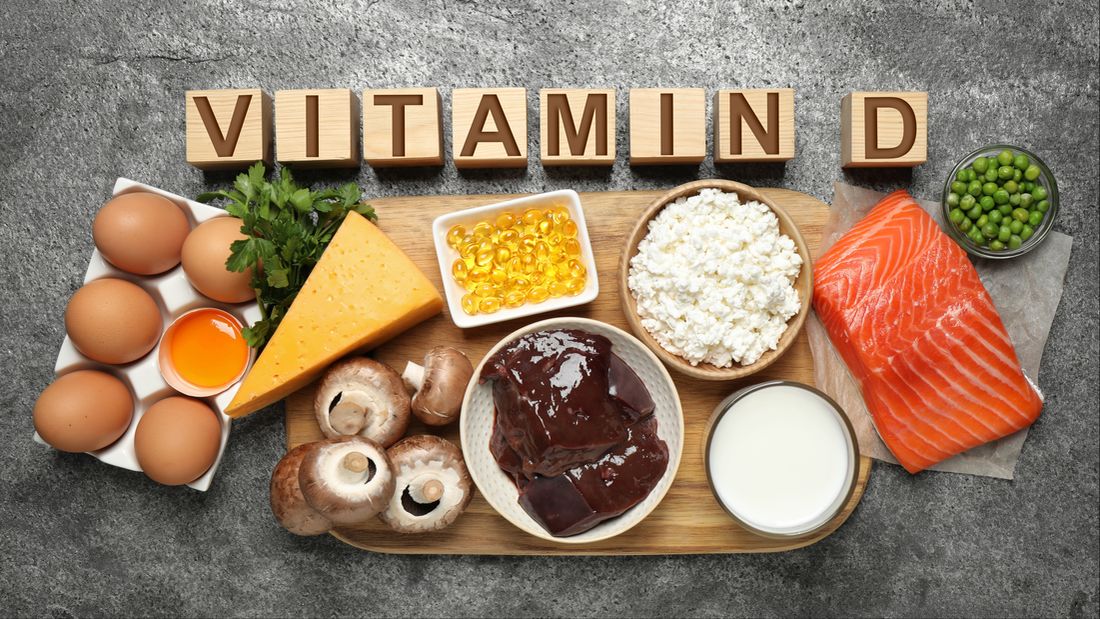By Frangiska Mylona,
Vitamin D is one of the fat-soluble vitamins along with Vitamin E, Vitamin K, and Vitamin A forming the acronym DEKA that reminds us of the translation of the number ‘’ten’’ in Greek. Vitamin D is one of the most studied vitamins and is debated due to controversies surrounding its levels in Mediterranean and Scandinavian populations.
Vitamin D’s inactive forms are obtained primarily from two sources; the first source includes the dietary intake from plant sources that give Ergocalciferol ( Vitamin D2) and from animal tissues like in fatty fish such as salmon, liver, and egg yolks giving Cholecalciferol ( Vitamin D3). The second source involves sunlight that converts 7-Dehydrocholesterol (an intermediate product from cholesterol synthesis) to Cholecalciferol in humans’ dermis and epidermis.
However, Vitamin D must undergo two hydroxylation reactions to become active. The first reaction is catalyzed by a specific hydroxylase in the liver. The second one is catalyzed in the kidneys by 1α-hydroxylase to become its active form as Calcitriol.
Vitamin D maintains adequate plasma calcium levels and does that by increasing calcium uptake from the intestines, minimizing loss of calcium by the kidneys, and stimulating bone resorption when necessary, stimulating bone remodeling.

When it comes to bone remodeling, it is a necessary process that occurs throughout life and is necessary to maintain healthy bones. A normal bone is composed of an organic matrix containing cells and type I collagen among others. It is also composed of an inorganic matrix including calcium hydroxyapatite, magnesium, potassium, chloride… There are three types of cells including osteoblasts, osteoclasts, and osteocytes. Bone resorption by osteoclasts is balanced with bone formation by osteoblasts.
In adults and children, low vitamin D intake or limited sun exposure can cause osteomalacia and rickets. Also, in chronic renal failure, it results in decreased ability to form Vitamin D active form. This can lead to hyperphosphatemia and precipitation of calcium phosphate crystals.
Vitamin D is a dietary requirement for individuals with limited sunlight exposure, such as northern latitude populations because of their reduced natural sunlight exposure.
On the other hand, like all-fat soluble vitamins, it can be stored in the body and is only slowly metabolized. When the dose of Vitamin D is too high, it can lead to toxicity with loss of appetite, nausea, thirst, and stupor as well as calcium deposition in many organs including the arteries and kidneys.
There is a paradoxical phenomenon though, where studies have shown that people living in the Mediterranean region have suboptimal levels of vitamin D, despite the sunny weather. Also, it is known that Vitamin D supplementation is not recommended in these areas due to sunny weather. This phenomenon seems to get attributed to the following reasons; the use of solar protectors, the decreased consumption of food rich in Vitamin D along with reduced food fortification. Additionally, further research showed that sun-seeking behavior is avoided in most Mediterranean countries, both due to heat avoidance and melanoma prevention guidelines. Furthermore, the modern lifestyle and office jobs tend to prevent people from enjoying their time outdoors. This phenomenon needs to be studied further and research programs should be encouraged.

Another critical role of vitamin D concerns the immune system. Laboratory studies show that vitamin D can reduce cancer cell growth, control infections, and reduce inflammation. There is also an implication that people with Vitamin D deficiency may be more susceptible to COVID-19 infection but still, it is unclear on whether if vitamin D should be used in the prevention or treatment of COVID-19 . However ,many researchers believe that vitamin D3 supplementation could be a valuable ally for limiting the spread of COVID-19 infection and related death.
In conclusion, today’s society must emphasize the importance of a healthy diet and regular checkups. Vitamins can be such helpful tools, even in pandemics, and maybe science and medicine will discover more of their properties in the future. This is just the beginning of a very promising start…
References
- Lippincott’s Illustrated Reviews; Biochemistry 5th edition.
- Crush Step 1 . The Ultimate USMLE Step 1 Review. 2nd edition
- Díaz-Rizzolo, D.A., Kostov, B., Gomis, R. et al. Paradoxical suboptimal vitamin D levels in a Mediterranean area: a population-based study. Sci Rep 12, 19645 (2022).




